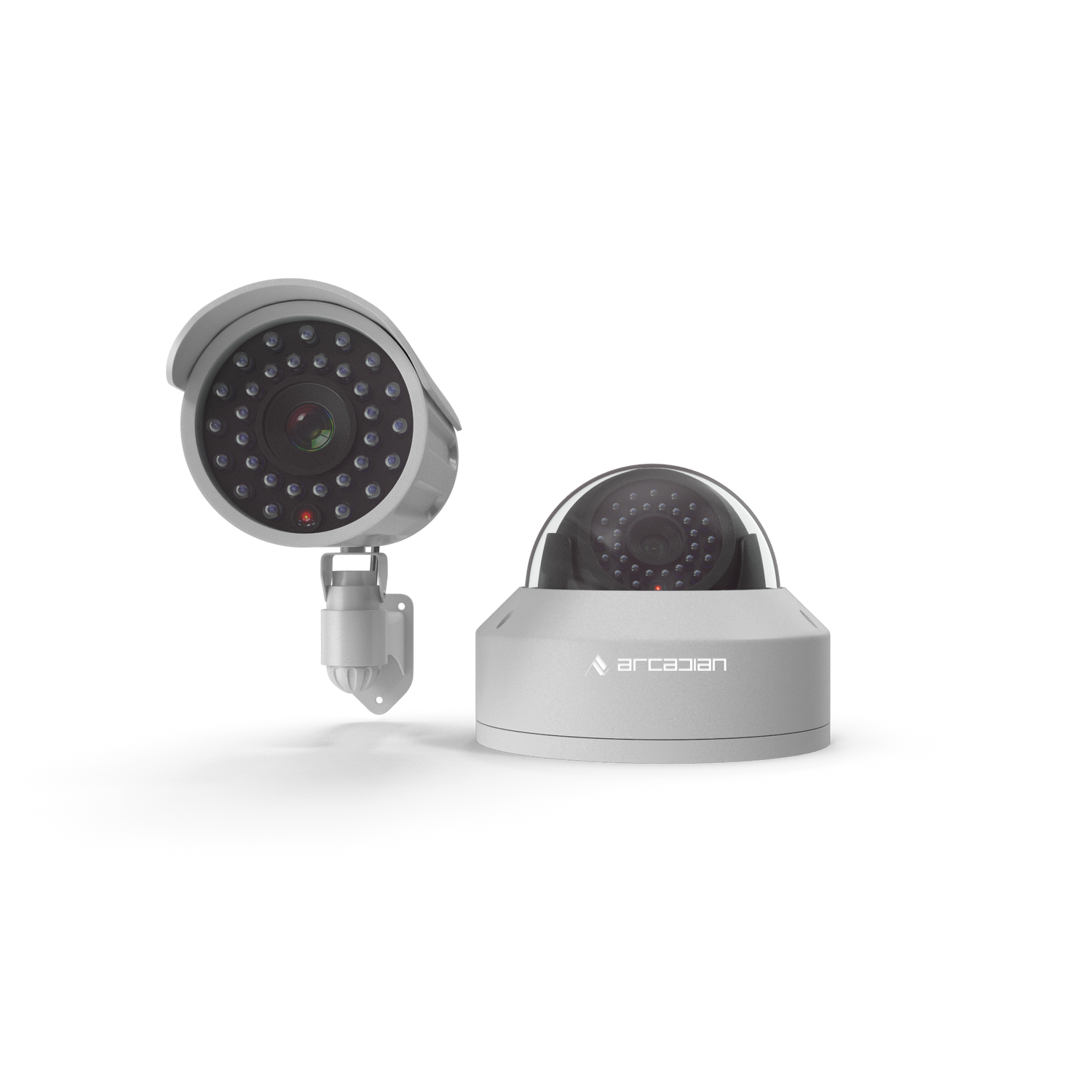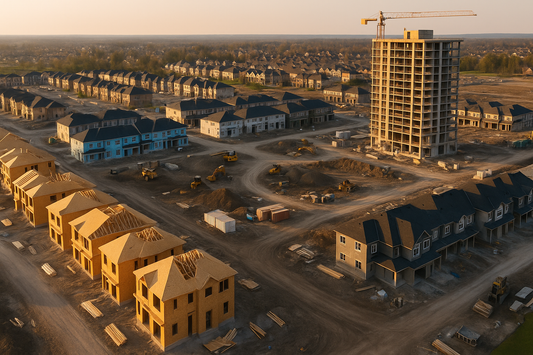AWS vs Azure vs Google Cloud: Which Is Best for Video Surveillance and Security
Introduction to Cloud Video Surveillance Cloud video surveillance has revolutionized many industries—but few as rapidly as security monitoring and AI video monitoring. Gone are the days of clunky DVRs and isolated camera feeds. With the rise of cloud based video surveillance, security systems are smarter, faster, and more scalable than...

- Introduction to Cloud Video Surveillance
- Why Cloud Video Surveillance Matters in Modern Security
- AWS for Cloud Video Surveillance Solutions
- Microsoft Azure for Cloud Based Security Surveillance
- Google Cloud for Advanced AI Video Monitoring
- Comprehensive Comparison: Cloud Video Surveillance Platforms
- Best Cloud Video Surveillance Platform by Use Case
- Real-World Cloud Video Surveillance Implementations
- Advanced Features in Modern Cloud Video Surveillance
- Cost Optimization Strategies for Video Surveillance Cloud Storage
- Security and Compliance in Cloud Based Video Surveillance
- Frequently Asked Questions About Cloud Video Surveillance
- Conclusion: Choosing the Right Cloud Video Surveillance Platform
Introduction to Cloud Video Surveillance
Cloud video surveillance has revolutionized many industries—but few as rapidly as security monitoring and AI video monitoring. Gone are the days of clunky DVRs and isolated camera feeds. With the rise of cloud based video surveillance, security systems are smarter, faster, and more scalable than ever. But with three major cloud providers dominating the landscape—AWS, Microsoft Azure, and Google Cloud—how do you know which one fits your video surveillance cloud storage needs?
This comprehensive guide dives deep into the core features, performance, and pricing of each provider for cloud video surveillance systems. Whether you're an SMB deploying your first cameras or a global enterprise migrating from NVRs, we'll help you decide where to stream, store, and analyze your video data with the best cloud based video surveillance system.
Why Cloud Video Surveillance Matters in Modern Security
Cloud video surveillance is no longer just about recording—it's about real-time detection, AI video monitoring, remote accessibility, and integrating with larger operational systems. Here's why cloud based security surveillance is essential for businesses across the US and Canada:
Key Benefits of Cloud Video Surveillance:
-
Scalability: Easily expand video surveillance cloud storage and processing as your camera count grows
-
Remote Access: Monitor locations anywhere without on-site servers through cloud video surveillance software
-
AI & Video Analytics: Detect threats, count people, identify patterns with advanced AI video monitoring
-
Resilience & Compliance: Redundant backups and global data compliance support for cloud based video surveillance
-
Cost Efficiency: Reduce hardware costs with cloud based video surveillance systems
Traditional DVR/NVR systems lack the flexibility, cost-efficiency, and intelligence of a well-designed cloud video surveillance platform.
AWS for Cloud Video Surveillance Solutions
Amazon Web Services offers a robust ecosystem ideal for scalable, enterprise-grade cloud video surveillance deployments across North America.
AWS Strengths for Cloud Based Video Surveillance:
-
Edge Integration: AWS Panorama and Snowball Edge enable local AI inference and high-performance edge computing for cloud video surveillance
-
AI Services: Use Kinesis Video Streams with Amazon Recognition for live and stored AI video monitoring
-
Storage Optimization: Store video in S3 with tiering (Standard, Intelligent-Tiering, Glacier) to reduce video surveillance cloud storage costs
-
Global Reach: Largest number of availability zones worldwide for cloud based security surveillance
-
Scalable Infrastructure: Perfect for large-scale cloud video surveillance software deployments
AWS Challenges:
-
Pricing complexity—understanding costs for storage, analytics, and egress can be difficult
-
Requires experienced DevOps to architect an end-to-end cloud based video surveillance system
References:
-
AWS Kinesis Video Streams
-
AWS Panorama for Edge AI
Microsoft Azure for Cloud Based Security Surveillance
Azure brings an enterprise-friendly cloud environment with deep ties to physical security vendors and strong compliance features for cloud video surveillance.
Azure Strengths for AI Video Monitoring:
-
Azure Video Analyzer: Combines AI with event-based video processing for advanced cloud video surveillance
-
IoT Edge Integration: Perfect for hybrid deployments using Azure IoT Hub in cloud based video surveillance systems
-
Security & Compliance: Trusted cloud for government and healthcare sectors requiring secure video surveillance cloud storage
-
Strong Windows/Active Directory Integration: Ideal for enterprise cloud video surveillance software setups
-
North American Data Centers: Excellent coverage for US and Canadian cloud based security surveillance needs
Azure Challenges:
-
Less video-focused infrastructure out-of-the-box for cloud video surveillance
-
Slower rollout of advanced video AI features compared to AWS or Google for AI video monitoring
References:
-
Azure Video Analyzer
-
Azure IoT for Video Analytics
Google Cloud for Advanced AI Video Monitoring
Google Cloud Platform (GCP) leans heavily into AI, automation, and cost transparency, making it a favorite for analytics-driven startups and modern cloud video surveillance integrators.
Google Cloud Strengths for Cloud Video Surveillance:
-
Vision AI & Vertex AI: Custom model training for face blur, object detection, motion analysis in cloud based video surveillance
-
Lowest Egress Fees: Cost-effective for multi-region video viewing and video surveillance cloud storage
-
Innovative ML Tools: Ideal for companies building next-gen security insights with AI video monitoring
-
AutoML Capabilities: Simplified machine learning for cloud video surveillance software
-
BigQuery Integration: Advanced analytics for cloud based security surveillance data
Google Cloud Challenges:
-
Fewer off-the-shelf tools for traditional cloud based video surveillance systems
-
Smaller ecosystem of physical security hardware partners for cloud video surveillance
References:
-
Google Cloud Vision AI
-
Vertex AI
Comprehensive Comparison: Cloud Video Surveillance Platforms
|
Feature / Provider |
AWS |
Azure |
Google Cloud |
|
AI/ML Capabilities |
Strong (Rekognition) |
Moderate (Video Analyzer) |
Very Strong (Vision AI) |
|
Edge Device Support |
Panorama, Snowball |
IoT Edge |
Edge TPU, Coral |
|
Video Analytics APIs |
Kinesis + Rekognition |
Azure Video Analyzer |
Vision AI + AutoML |
|
Compliance Coverage |
High (ISO, FedRAMP) |
Very High (Gov cloud) |
High |
|
Storage Options |
S3 + Glacier tiering |
Blob tiers (hot to archive) |
Nearline / Coldline |
|
Egress Pricing |
High |
Medium |
Low |
|
Partner Ecosystem |
Extensive (Genetec, Milestone) |
Good (Bosch, Axis) |
Moderate (Verkada, OpenCV) |
|
Developer Tools |
Deep (Lambda, IoT Core) |
Integrated DevOps tools |
AutoML, BigQuery, Colab |
Best Cloud Video Surveillance Platform by Use Case
For Different Business Types:
-
Retail Chains & Multi-site Businesses: AWS for scalability and analytics depth in cloud video surveillance
-
Enterprise & Regulated Sectors: Azure, due to compliance and enterprise integrations for cloud based security surveillance
-
Startups & AI Security Innovators: Google Cloud for flexibility and ML superiority in AI video monitoring
-
Budget-conscious Projects: Google Cloud for cost-effective egress and simple cloud video surveillance software deployment
Regional Considerations for US & Canada:
-
East Coast Operations: All three providers offer excellent coverage with AWS leading in availability zones
-
West Coast Tech Companies: Google Cloud provides superior AI capabilities for innovative cloud based video surveillance
-
Government Contractors: Azure's FedRAMP compliance makes it ideal for regulated cloud video surveillance deployments
-
Cross-Border Operations: AWS global infrastructure supports seamless US-Canada cloud based security surveillance
Real-World Cloud Video Surveillance Implementations
Success Stories:
-
AWS + Genetec: Major deployments across retail and smart city projects using cloud video surveillance
-
Azure + Bosch: Smart building security solutions in North America with cloud based video surveillance systems
-
Google Cloud + Verkada: AI-assisted cloud-first security stack for modern AI video monitoring
Implementation Considerations:
-
Bandwidth Requirements: Plan for video surveillance cloud storage upload and streaming needs
-
Local Regulations: Ensure compliance with US and Canadian data protection laws for cloud based security surveillance
-
Integration Needs: Consider existing security infrastructure when choosing cloud video surveillance software
-
Scalability Planning: Design for future growth in your cloud based video surveillance system
Advanced Features in Modern Cloud Video Surveillance
AI-Powered Analytics:
-
Facial Recognition: Identify persons of interest across multiple locations
-
Behavioral Analysis: Detect unusual activities and potential security threats
-
Object Detection: Monitor for weapons, packages, or unauthorized items
-
Crowd Management: Count people and analyze crowd density for safety
Smart Alerts and Notifications:
-
Real-time Alerts: Instant notifications for security events
-
Custom Triggers: Set specific conditions for cloud based security surveillance alerts
-
Mobile Integration: Access cloud video surveillance software from anywhere
-
Integration APIs: Connect with existing security and business systems
Cost Optimization Strategies for Video Surveillance Cloud Storage
Storage Tiering Best Practices:
-
Hot Storage: Recent footage for immediate access
-
Warm Storage: Weekly/monthly archives for regular review
-
Cold Storage: Long-term retention for compliance
-
Archive Storage: Rarely accessed historical data
Bandwidth Management:
-
Edge Processing: Reduce cloud upload with local AI video monitoring
-
Compression Optimization: Balance quality with storage costs
-
Selective Upload: Only store relevant footage in video surveillance cloud storage
-
Regional Distribution: Use CDNs for multi-location cloud video surveillance
Security and Compliance in Cloud Based Video Surveillance
Data Protection Standards:
-
Encryption: End-to-end protection for cloud video surveillance data
-
Access Controls: Role-based permissions for cloud based security surveillance
-
Audit Trails: Complete logging for compliance requirements
-
Data Residency: Control where video surveillance cloud storage occurs
Regulatory Compliance:
-
PIPEDA (Canada): Personal information protection requirements
-
State Privacy Laws: Varying requirements across US states
-
Industry Standards: HIPAA, PCI-DSS, and other sector-specific needs
-
Cross-Border Data Transfer: Compliance for US-Canada operations
Frequently Asked Questions About Cloud Video Surveillance
What is cloud video surveillance and how does it differ from traditional systems?
Cloud video surveillance stores and processes video data in the cloud rather than on local DVRs or NVRs. This provides better scalability, remote access, AI analytics capabilities, and reduces on-site hardware requirements. Cloud based video surveillance systems offer superior flexibility and integration options compared to traditional setups.
Which cloud provider offers the best video surveillance cloud storage pricing?
Google Cloud typically offers the most cost-effective video surveillance cloud storage, especially for multi-region deployments due to lower egress fees. However, total cost depends on your specific usage patterns, analytics needs, and compliance requirements for cloud based security surveillance.
Can cloud video surveillance work with existing camera infrastructure?
Yes, most cloud video surveillance software solutions support integration with existing IP cameras through ONVIF standards or specific manufacturer APIs. Cloud based video surveillance systems can often work with cameras from multiple vendors simultaneously.
How secure is cloud based security surveillance compared to on-premises systems?
Cloud based security surveillance often provides superior security through enterprise-grade encryption, regular security updates, distributed infrastructure, and professional security teams. Major cloud providers invest heavily in security measures that most organizations cannot match with on-premises systems.
What internet bandwidth is required for cloud video surveillance?
Bandwidth requirements vary based on camera resolution, frame rate, and compression. Typically, a 1080p camera requires 2-10 Mbps upload bandwidth for cloud video surveillance. AI video monitoring and edge processing can significantly reduce bandwidth needs.
How long can video data be stored in video surveillance cloud storage?
Storage duration depends on your chosen plan and compliance requirements. Most cloud video surveillance platforms offer flexible retention periods from days to years. Automated tiering can move older footage to cheaper archive storage while maintaining accessibility.
Is AI video monitoring available on all cloud platforms?
All three major cloud providers offer AI video monitoring capabilities, but with different strengths. Google Cloud excels in custom AI models, AWS provides comprehensive pre-built services, and Azure offers enterprise-focused video analytics for cloud based video surveillance.
What happens if internet connectivity is lost with cloud video surveillance?
Most modern cloud video surveillance software includes edge storage capabilities, allowing cameras to continue recording locally during internet outages. Once connectivity is restored, footage automatically syncs to video surveillance cloud storage.
Can cloud based video surveillance integrate with existing security systems?
Yes, cloud video surveillance platforms typically offer APIs and integrations with access control systems, alarm panels, and other security infrastructure. This allows for comprehensive cloud based security surveillance solutions.
What are the compliance considerations for cloud video surveillance in the US and Canada?
Compliance requirements vary by industry and location. Key considerations include data residency (where footage is stored), encryption standards, access controls, and retention policies. Most enterprise cloud video surveillance solutions offer compliance-ready configurations for various regulations.

Conclusion: Choosing the Right Cloud Video Surveillance Platform
When it comes to cloud video surveillance, there is no one-size-fits-all solution. AWS leads in infrastructure and edge capabilities for large-scale cloud based video surveillance deployments. Azure offers deep compliance and enterprise integration perfect for regulated industries requiring robust cloud based security surveillance. Google Cloud shines in AI video monitoring capabilities and cost-effective video surveillance cloud storage.
The choice between these platforms should be based on your specific needs:
-
Scalability Requirements: How many cameras and locations do you need to support?
-
AI and Analytics Needs: What level of AI video monitoring do you require?
-
Compliance Requirements: Do you need specific certifications for your cloud based security surveillance?
-
Budget Constraints: What are your costs for storage, bandwidth, and analytics?
-
Integration Needs: How will the cloud video surveillance software work with existing systems?
For businesses across the US and Canada, all three platforms offer robust solutions for cloud video surveillance. The key is choosing the platform that aligns with your technical requirements, budget, and long-term security strategy.
ArcadianAI helps bridge the gap between complexity and usability—whether you're on AWS, Azure, or GCP. Our AI security assistant, Ranger, works with over 3,000 camera models, giving you centralized insights without the infrastructure headaches of managing complex cloud based video surveillance systems.
Book a demo now to see how ArcadianAI brings the best of cloud video surveillance to your business, regardless of which cloud platform you choose.

Security is like insurance—until you need it, you don’t think about it.
But when something goes wrong? Break-ins, theft, liability claims—suddenly, it’s all you think about.
ArcadianAI upgrades your security to the AI era—no new hardware, no sky-high costs, just smart protection that works.
→ Stop security incidents before they happen
→ Cut security costs without cutting corners
→ Run your business without the worry
Because the best security isn’t reactive—it’s proactive.







